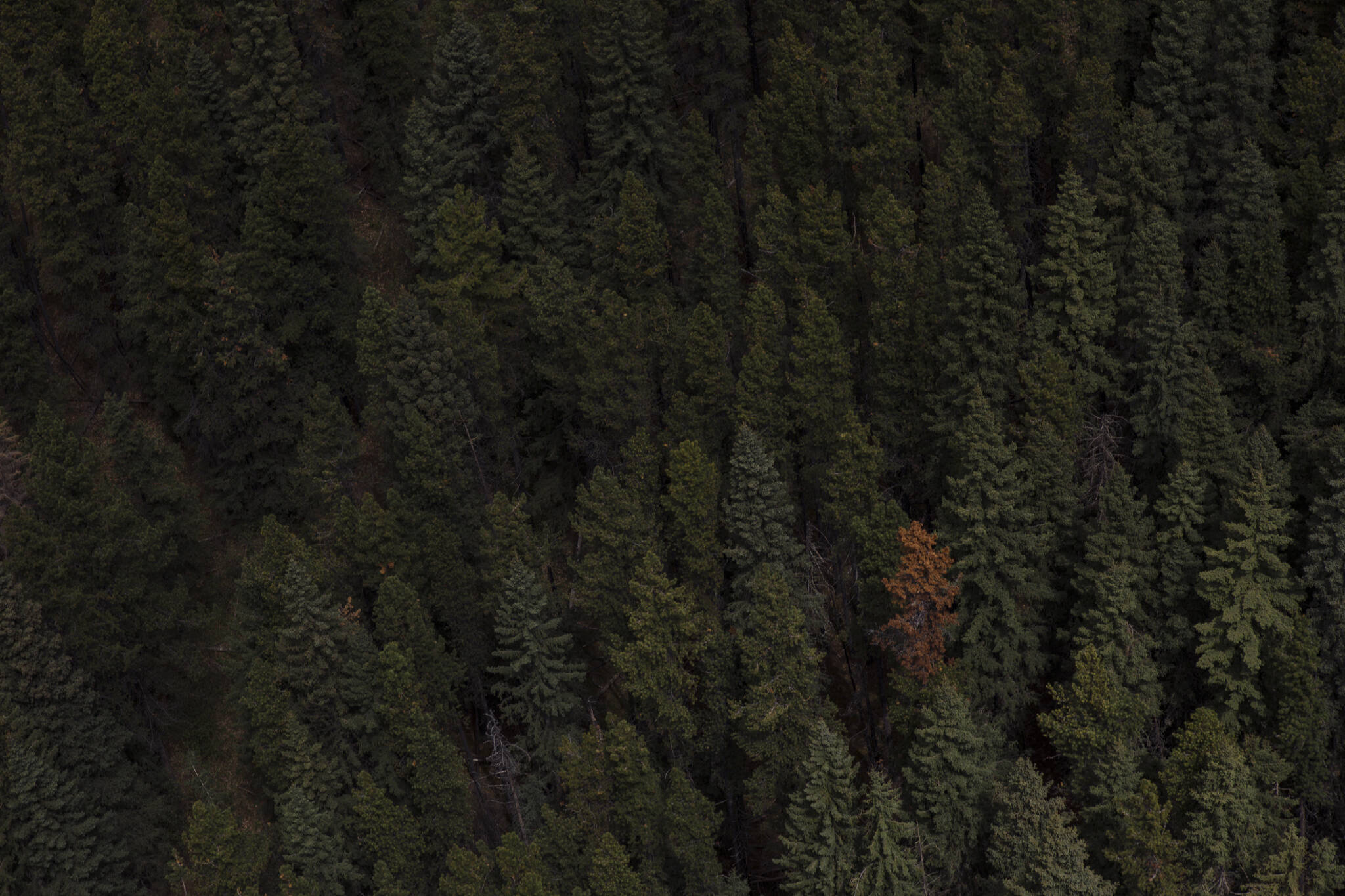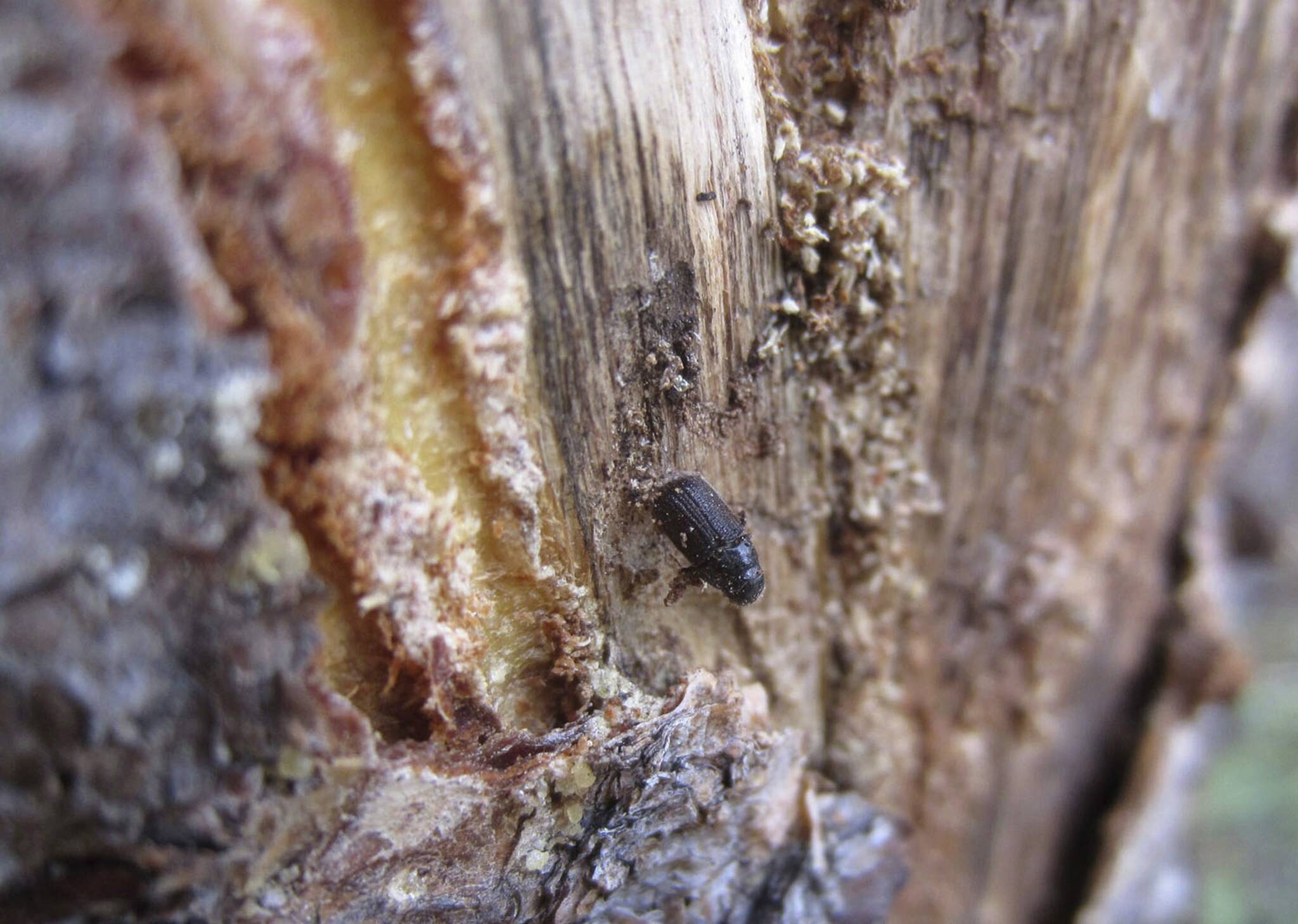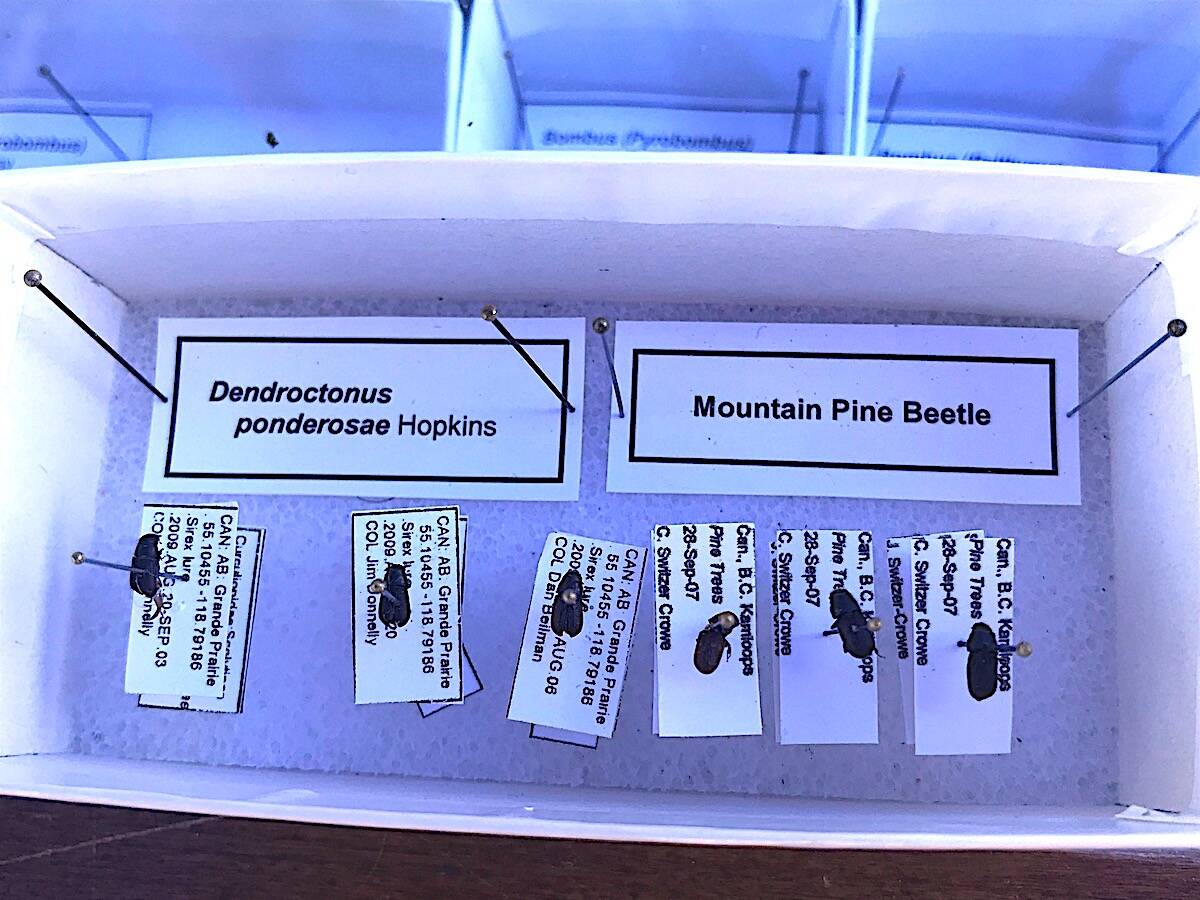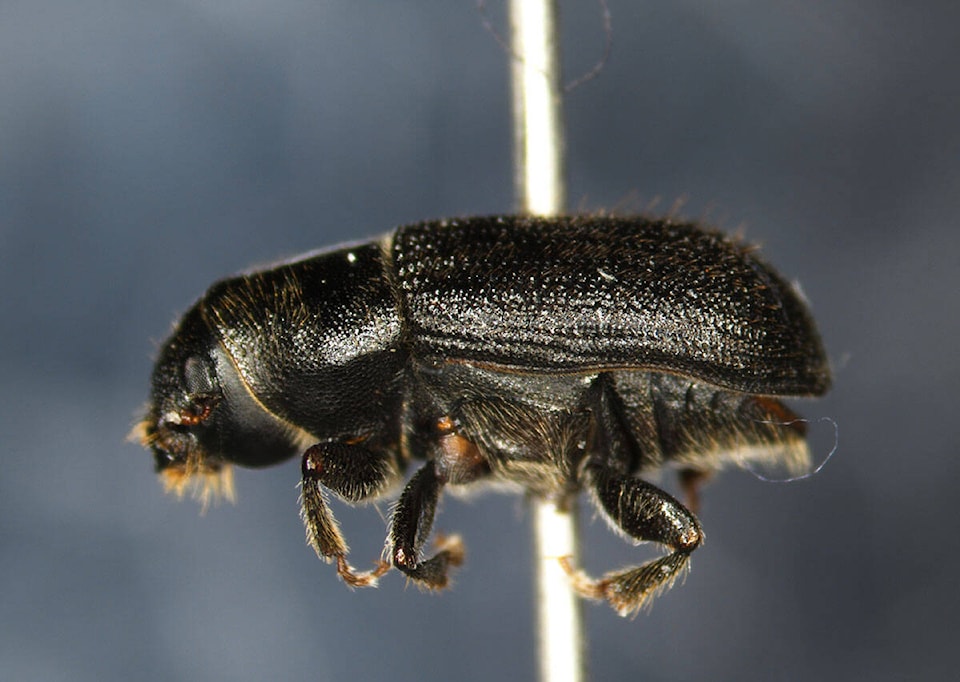Mountain pine beetle continues to creep eastward through central Alberta.
Lacombe County recently notified residents on its website that the beetle had been found at several sites on the west side of the county.
The numbers are small, but it is a sign that the beetle, which has destroyed billions of pine trees throughout Alberta and B.C. continues to creep ever eastward.
Alberta tree expert Toso Bozic is not surprised to hear that mountain pine beetles have been found in the county. Bozic runs an agro-forestry consulting business called Yard Whispers, and roams the province delivering dozens of workshops a year on all things tree-related as well as offering consulting for numerous municipalities.
Bozic first came across the beetles in the Grande Prairie area in 2004, when they swept in across the Rocky Mountains from B.C. and into the Hinton and Edson areas.
RELATED:
A milder winter could lead to spike in mountain pine beetles
Since then in central Alberta they have been found in Wetaskiwin and Ponoka Counties, with heavier infestations in Brazeau, Yellowhead and Clearwater counties, especially south of Rocky Mountain House.
“They have started moving much more east. I found mountain pine beetle in Thorsby (about 40 km west of Leduc), for example, which is really kind of far away from any forest land,” he said.
They move east the same way they got here from B.C., riding the wind until they are deposited, in many cases, hundreds of kilometres from where they started. In their new homes, they can quickly detect if there are suitably tasty pine trees in the area, either in remaining forested areas or in farm windbreaks and shelter belts.
There has been plenty of mountain pine beetle found north and west of Rocky Mountain House. In 2018, they were found for the first time right at the edge of the town.
“East of the town and towards Red Deer, I’ve got some clients who have got mountain pine beetle in their natural pine forest,” he said.
Mother Nature has the only really effective way to keep mountain pine beetles in check. Cold winters with prolonged wintertime freezes in the -36 C will reduce beetle populations.
Recent cold winters have slowed the spread, but it is unclear at this point what effect last winter had, he said.
Options are limited for those who suspect their trees may be infected by pine beetle. Verbenone is a good option for those trying to protect their trees, although the effectiveness only ranges from 40 to 60 per cent based on studies, he said.
Bozic recommends monitoring your pine trees, especially the oldest and biggest ones, which are pine beetles’ favourite targets.
If you have find an infected tree, removing it, debarking and burning it is usually the safest option to reduce the likelihood of the beetles spreading.
Lacombe County is offering Verbenone for sale. The product comes in a pouch ($103 for 10 pouches) that should be nailed to the north side of trees that are at risk from the beetle from June 15 to July 1.
Each pouch contains a pheromone that sends a message to pine beetles that trees in an area are already heavily infested and would not be good targets. The idea is to prevent the sort of mass attacks that prove fatal to pine trees.
RELATED:
Mountain pine beetle invades Rocky Mountain House area
Lacombe County began providing Verbenone a couple of years ago when the first signs of pine beetle appeared on private land at the west edge of the county.
“The population hasn’t been too impactful to this point. But it seems to be just a little bit of a matter of time,” said Mike Bates, manager of agriculture and environmental services.
“As the pine beetles continue to move east we anticipate we will continue to see a little bit more impact in our area.”
Pine beetles have affected about 50 million acres of mainly lodgepole pine forests in B.C. and Alberta, where the beetles first carried in by mountain winds in the early 2000s. More than two million acres in Alberta have been hit by the beetles, which will attack a range of pine trees, ponderosa, western white, whitebark, limber and jack.
The mountain pine beetle kills trees by infecting them with a blue-staining fungus that the beetles feed on and which also prevents water and nutrients from nourishing the rest of the tree, reducing its ability to defend itself with its own resins.
Natural Resources Canada estimates the beetle has attacked half of the commercial lodgepole pine in B.C., taking out 752 million cubic metres of marketable lumber.
West Fraser forestry superintendent Tom Daniels said in its forest management area west of Rocky Mountain House they have not been seeing a lot of new hits in their bait sites, which are placed in the spring to catch beetles during the summer in-flights.
“Things have settled down a lot.
“It kind of depends on what the weather is like going forward. Again, if we get some cold winters maybe we’ll get enough that it will actually kill the population, but for now, the population is not killed off.”
In recent years, there have not been the big in-flights of beetles that had been some years previously.
“It is absolutely kind of a good news story, but it could just be short-lived. All we might have got was a bit of a reprieve.”
News tips
Like us on Facebook and follow us on Twitter



